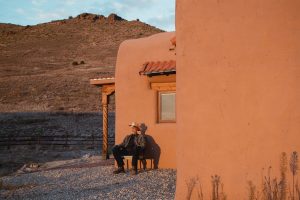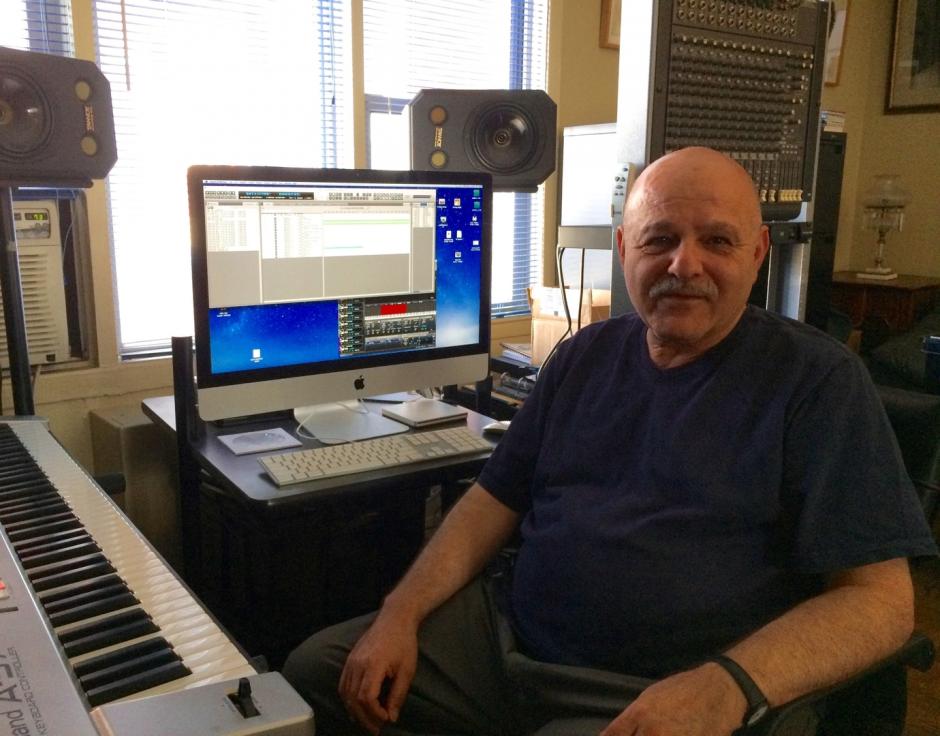Musical Travel Companions for a Year of Going Nowhere
The composer John Luther Adams combines immersive sound worlds with environmental activism.
In the early spring of 1989, the composer John Luther Adams set up camp near the confluence of the still-icy Tanana and Yukon rivers in Alaska. For days he held a solitary vigil, nursing heavy thoughts about his romantic and professional lives, in both of which he felt at a crossroads.
His dreams, he writes in a new memoir, began to fill with the sound of ice turning to water: “the glassy tones of candle ice swirling in whirlpools, the intricate arpeggios of meltwater dripping, and the ominous rumbling and grinding of icebergs.”
Finally the ice broke — and with it, his gloom. The rivers resumed motion and Mr. Adams returned to his desk in his off-the-grid cabin near Fairbanks, inspired to write music that would evoke the elemental forces of nature as he had experienced them — “at once terrifying and comforting, transpersonal and purifying.”
In the memoir, “Silences So Deep: Music, Solitude, Alaska,” Mr. Adams, 67, relates this story as one of several epiphanies on his path as an environmental activist and a composer — and often as both at once. In 2013, he wrote “Become Ocean,” a hypnotic orchestral work for which he won the Pulitzer Prize in Music. For 40 minutes, it immerses the listener in a sonic churn, ebb and roar that conjures a world inundated by rising sea levels. The critic Alex Ross called it “the loveliest apocalypse in musical history.” Taylor Swift was so taken by the Seattle Symphony’s recording of the piece that she donated $50,000 to the orchestra.
A box set released in September places that recording of “Become Ocean” together with its two companion works, “Become River” (2010) and “Become Desert” (2017). Heard together — in pandemic-enforced isolation, no less — the three pieces offer an intoxicating introduction to Mr. Adams’s psychoacoustic geology of the spirit. Together with his illuminating memoir, they make fine travel companions in this year of going nowhere.
The book is a love letter to Alaska, where Mr. Adams made his home for 40 years beginning in the late 1970s. As it retraces the way the region’s extremes of scale, light and temperature forged his personal development, “Silences So Deep” also makes a case for a shared human interest in preserving its ecological integrity.
For Mr. Adams the activist, the north is nothing less than “a place to rediscover our ancient roots in the earth and imagine new possibilities for the human spirit.” For Mr. Adams the composer, Alaska inspired the longing to create “music that could be heard only there, music that belonged there like the plants and the birds, music that resonated with all that space and silence, cold and stone, wind and fire and ice.”
He was born very far from there — in Mississippi, in 1953 — moved frequently as a boy and studied composition at the California Institute of the Arts. His commitment to environmental causes began with birds: He became obsessed with the fate of the California condor, which in the 1970s approached extinction because of urban development and toxic pesticides.Sign Up
Birdsong filtered into his music from the beginning, generating works like “songbirdsongs” (completed in 1980) and “Strange Birds Passing” (1983). In the memoir, birds appear at key moments to convey humor, supernatural guidance or news of the changing climate of the Arctic. These passages help explain how the bird song transcriptions in works like his haunting “Canticles of the Holy Wind” (2013), for choir and percussion, manage to be both ornithologically precise and redolent with mystery.
Punctiliousness and awe, science and spirit, merge to powerful effect in the “Become” trilogy. All three pieces unfold as single masses of sound, deeply textured and ever-changing. Like the natural phenomena that inspired them, these works have a paradoxical combination of animation and immutability. They transfix even in the absence of any discernible event.
Their underlying logic follows nature. In the memoir, Mr. Adams relates his fascination with fractals — complexly involuted forms that we find buried in the shape of things like trees, coastlines and lightning bolts. Flying from Fairbanks to Anchorage one day, he looked down at Denali and Mount Foraker and devised what would become the compositional structure for several pieces, including “Become Ocean.” He sketched four undulating lines on top of each other, the first with seven waves, the next five, then three, then a single large wave. In practice, this concept resulted in sonic worlds of engulfing, constantly shifting movement.
Other composers have written music about oceans, rivers and deserts. Smetana’s “Moldau” gurgles and flows from source to city. Félicien David’s “Le Désert” has a caravan passing through it. Debussy’s “La Mer” personifies nature through its movement titles, with waves that “play” and a “dialogue” between wind and sea.
What sets Mr. Adams’s seething, shimmering, preternaturally patient sound forces apart is their absence of a definable human anchor. The pieces that make up the “Become” trilogy are neither stories about nature nor pictures of it. Rather, as Mr. Adams writes in an essay accompanying the excellent recordings, “this is music that aspires to the condition of place.”
For the European Romantics, nature held the promise of elevating and healing the self. For Mr. Adams the decision “to simply stay put and pay attention to where we are” opens a way to dissolve the distinction between self and surroundings. The invitation to the listener, he writes, is “to enter into the music, to lose yourself, and perhaps to discover oceans, deserts and rivers of your own.”
In their focus on the pure materiality of sound, they share elements with Mr. Adams’s installation-like pieces meant to be performed outdoors. A listener can wander at will through “Inuksuit” (2009), with its archipelago of percussion instruments. “Sila: The Breath of the World,” at its Lincoln Center premiere in 2014, sent singers wading through a reflecting pool, holding megaphones.
These are visual coups, even as they aim to be primarily sonic experiences. In concert, the “Become” works, too, engage the eye with novel arrangements of musicians. Audience members can track musical processes by watching different groups of players grow animated, or inactive. In “Become River,” the ensemble is raked according to range, with the highest-pitched instruments, including the violins, seated on risers far upstage, so that the sound flows downhill to the bass-register instruments closest to the audience.
“Become Ocean” allows itself more time to do even less. The music burgeons and recedes, with different instrumental groups sometimes at odds with each other, sometimes in sync. When the crests align, a giant swell is created that registers somehow as both comforting and vertiginous. When the final notes receded, they left me with a stark craving for more, for a return into the amniotic embrace of sound.
Mr. Adams wrote “Become Desert” in the Sonoran Desert in Mexico and the Atacama Desert in Chile. As in “Become Ocean,” the duration, 40 minutes, is long enough to create an immersive experience gently animated this time by the blooming and subsiding of warm colors. The orchestra is joined by a choir — intoning the word “luz,” Spanish for “light” — that adds more voluptuous hues to the sound palette. Shiny percussion, flutes and high soprano voices evoke a desert heat that begins to shimmer in a state of sustained, quiet elation. The final notes — is that a tiny chime glancing off violin harmonics? — sound like the sun igniting a metallic vein in a rock. Light and matter seem to blend into one.
Light and matter — and time. In their featureless grandeur Mr. Adams’s works create containers for a kind of listening that dissolves expectation and constantly turns attention back to the present moment. In his memoir, he recalls a hike on the Arctic coastal plain, watching his companion ahead of him, feet steadily rising and falling, yet seemingly walking in place. With no landmarks to measure progress against, Mr. Adams observes, “we lose our sense of scale and distance — floating in undifferentiated space, suspended in time.”
With the “Become” trilogy he invites the listener along on the kind of journey that his friend, the Alaskan writer John Haines, imagined in the poem that gave Mr. Adams’s memoir its title:
There are silences so deep
you can hear
the journeys of the soul,
enormous footsteps
downward in a freezing earth.






